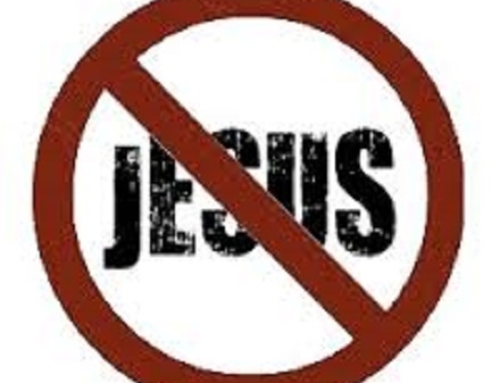Bill Donohue
Two University of Kentucky psychologists, Will M. Gervais and Maxine B. Najle, claim that 26 percent of Americans are atheists. Their research, available now at PsyArXiv.com, will appear in an upcoming edition of Social Psychological and Personality Science; the journal is published eight times a year.
Their finding not only contradicts every reputable survey on this subject—from Gallup to Pew Research Center—their methodology is questionable, their classifications are inexact, and their conclusions are contentious.
The researchers start with the assumption that owing to prejudice, many Americans who are atheists are reluctant to identify themselves as such in phone surveys. Gervais and Najle tried to skirt this bias by employing what is known as “the unmatched count technique.”
They split their respondents into two groups: both were asked the same series of mundane questions, such as whether they owned a dog, but one group was also asked if they believed in God. All the respondents were then asked to say how many of the items were true about them, without identifying any one specifically.
“The difference between the aggregate rates in these conditions can presumably be attributed to the addition of the socially sensitive item,” they said. In other words, they assumed that the two groups were similar in most respects, thereby leading them to assume that any difference was attributable to the question about God.
This is not an indefensible methodology, but it is obviously laden with assumptions—too many of them to draw a meaningful conclusion. More controversial is their binary classification of atheists as people who do not believe in God (as compared to those who do).
The researchers define atheists as “merely people who disbelieve or lack belief in the existence of God or gods.” They cite the Oxford English Dictionary (OED) as the source of their definition. But there is much more to this than they suggest.
The OED’s definition is broad enough to include agnostics. A more precise definition is found in the Merriam-Webster dictionary: It defines an atheist as “a person who does not believe in the existence of a god or any gods.” It defines an agnostic as “a person who holds the view that any ultimate reality (such as God) is unknown and probably unknowable.”
To put it differently, an atheist denies the existence of God; an agnostic doubts that God exists. They are not identical.
Digging a little deeper, even the OED lends support to the Merriam-Webster definition. For example, it cites historical examples where the early usage of the word atheist is employed to mean “there is no God.” By contrast, it defines an agnostic as “One who holds that the existence of anything beyond and behind material phenomenon is unknown and unknowable….”
A more serious objection concerns the way the researchers classify the population. From my own work, The Catholic Advantage: Why Health, Happiness, and Heaven Await the Faithful, the binary definition preferred by the researchers is too simplified, and therefore inadequate.
Frank Newport, editor-in-chief at Gallup, wrote a book a few years back, God Is Alive and Well, that concluded that more than 90 percent of Americans believe in God. That’s a much higher number than what Gervais and Najle would have us believe. Moreover, a Pew Forum survey concluded that 40 percent of Americans are “very religious,” and that the rest of the population was split between those who occasionally attend church and those who are not religious.
This last segment of the population is the most diverse of the three: about half of the “nonreligious” persons still go to church, albeit infrequently, and almost half of them believe in God; the other half, about 16 percent of the population, never attend church. These are the “nones”—those who, when asked about their religious affiliation, say they have none.
This shows how much more complex this segment of the population is: even those who are not religious defy classification as atheists, as interpreted by Gervais and Najle.
In fact, most of the “nonreligious” are neither atheist or agnostic, and a slight majority still believe in God. Indeed, agnostics are only 3.3 percent of the population and atheists are a mere 2.4 percent. Furthermore, 13 percent of these two segments of the population still attend church on a monthly or yearly basis.
So let’s recap. The most reputable survey research organizations in the nation put the percent of atheists in the population at 2.4. Gervais and Najle are saying the real figure is closer to 26 percent. In other words, Gallup and Pew are off by almost 1,000 percent.
For the reasons stated, the findings reported by these two prominent research institutes offer a much more in depth and sophisticated portrait of the public than the inquiry made by the Kentucky researchers.
It cannot go unsaid that the predicate of their research, and their conclusion, is also contentious. They maintain that “anti
-atheist prejudice” is driving their findings. In other words, due to prejudice, atheists are reluctant to identify themselves as such.
If Gervais and Najle were less given to political correctness, they might admit it is not atheists who are stigmatized in many cultural circles, it’s those who are openly religious. On TV, especially on late-night talk shows, and in movies, it is religious Americans—not atheists—who are the butt of cruel jokes and portrayals. Let’s not forget about college campuses: the faithful, not atheists, are much more likely to be stigmatized.
That the ones doing the branding consider themselves the high princes of tolerance makes this situation all the more disturbing. Quite frankly, never before in American history has there been less prejudice against atheists than there is today. Inflating their numbers may be a good strategy to embolden their ranks, but it is poor social science.







